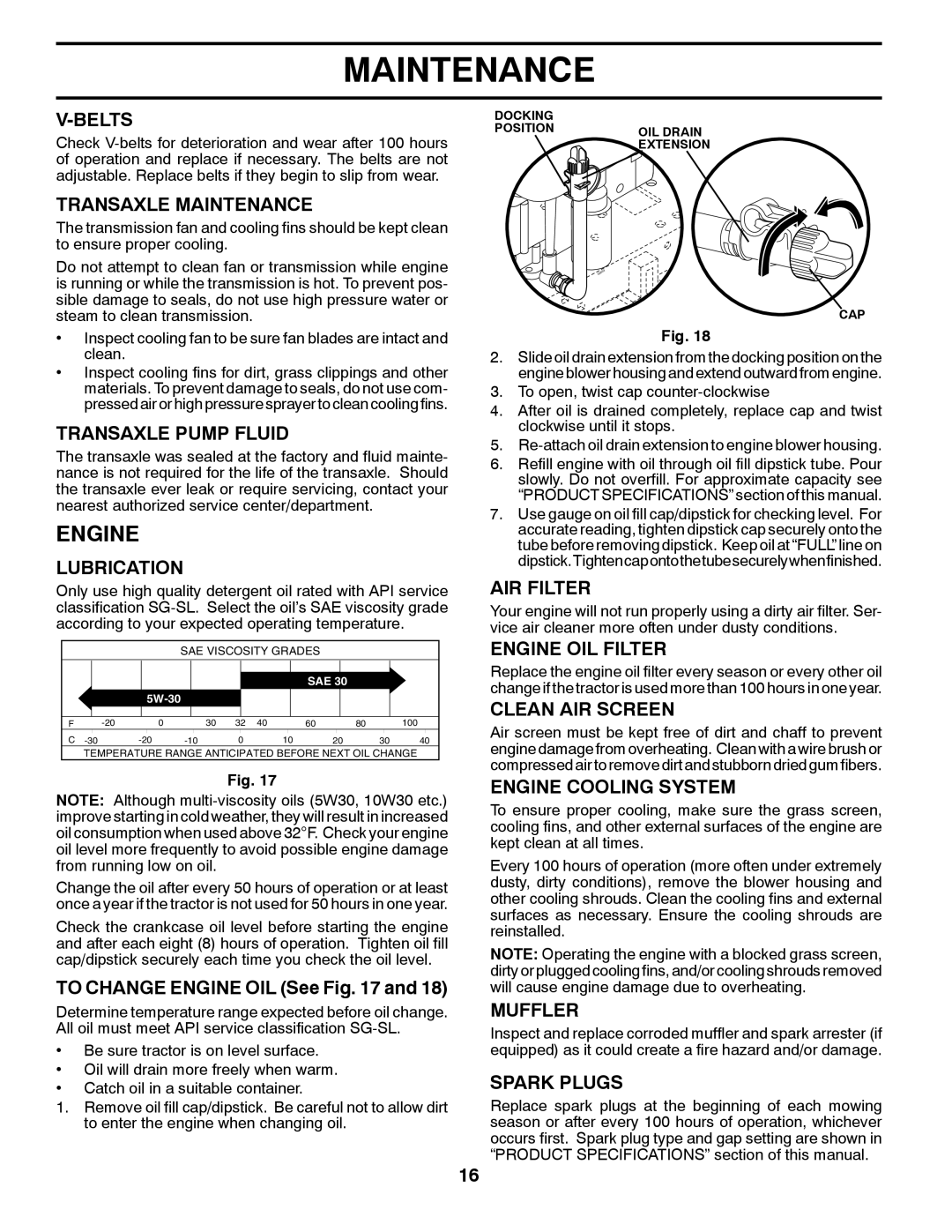GTH26V48LS specifications
Husqvarna GTH26V48LS is a powerful and reliable lawn tractor designed for homeowners looking for efficiency and comfort in lawn care. With its robust engine and advanced features, it aims to make the mowing experience smoother and more enjoyable.One of the standout characteristics of the GTH26V48LS is its 26 HP Kohler engine, which provides ample power for cutting through tough grass and tackling uneven terrains. The engine is designed to deliver both power and fuel efficiency, ensuring that homeowners can tend to their lawns without frequently worrying about refueling.
The cutting deck of the Husqvarna GTH26V48LS is 48 inches wide, allowing for a wider cutting path and efficient mowing of larger areas. This deck is equipped with three blades that provide a clean and precise cut, coupled with an adjustable cutting height ranging from 1 to 4 inches. Users can easily customize their mowing height to suit the grass type and personal preference.
Another significant feature is the pedal-operated hydrostatic transmission, which offers an easy and smooth driving experience. This system allows for effortless speed control without the need for shifting gears, making it an excellent choice for those who may be less experienced with lawn tractors. Coupled with the ergonomic steering wheel, the overall operation is designed for comfort during prolonged mowing sessions.
The Husqvarna GTH26V48LS also incorporates advanced technologies such as the SmartSwitch electrical control system, which simplifies starting and operation. This technology ensures a reliable starting process while minimizing potential issues down the line.
Additionally, the tractor features a comfortable high-back seat that provides support during longer mowing sessions. The front headlights enhance visibility while mowing in low light conditions, making it practical for early morning or late evening tasks.
Overall, the Husqvarna GTH26V48LS combines power, efficiency, and comfort, making it an ideal choice for homeowners seeking a robust lawn tractor that can handle various lawn care needs.

